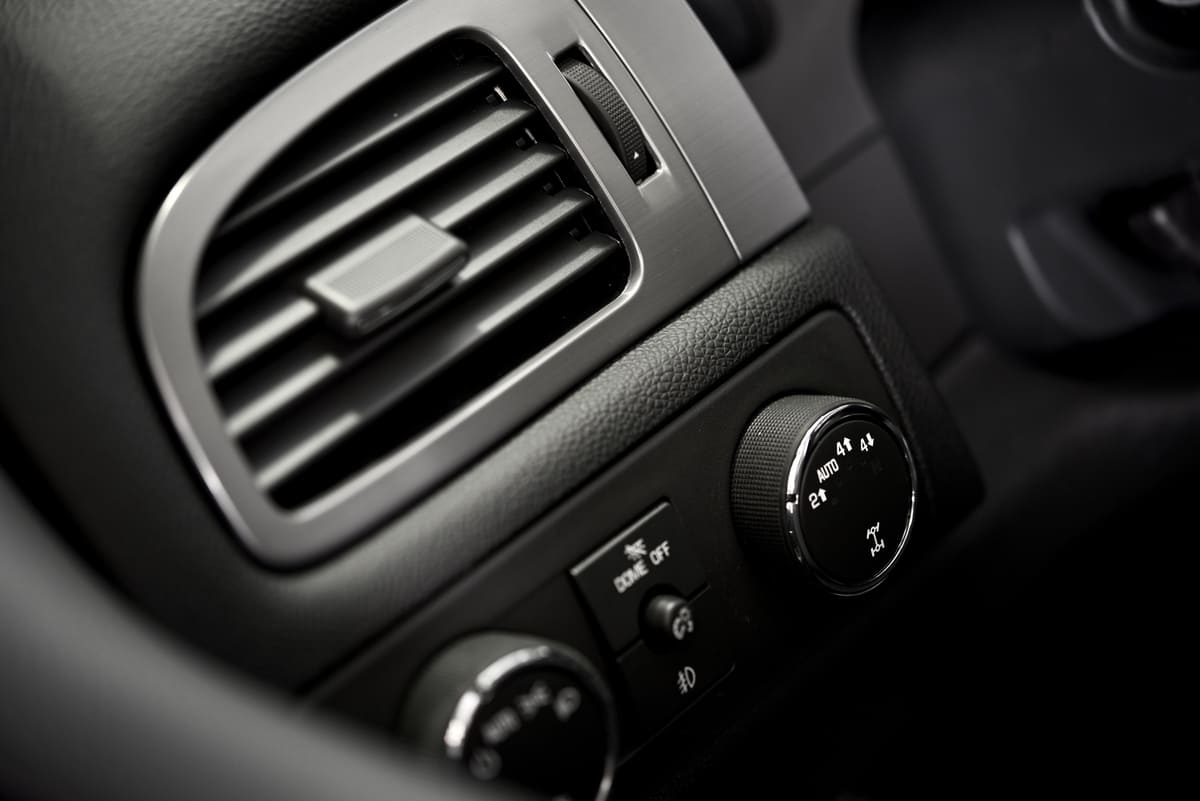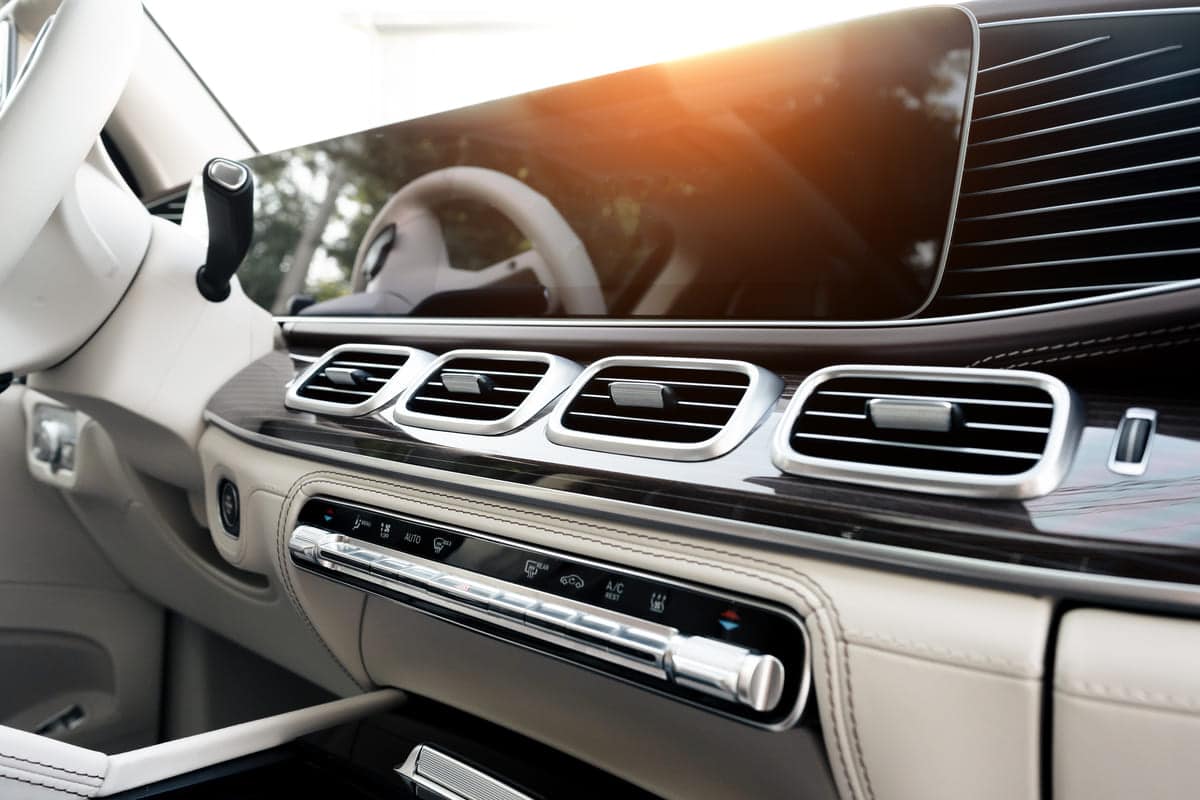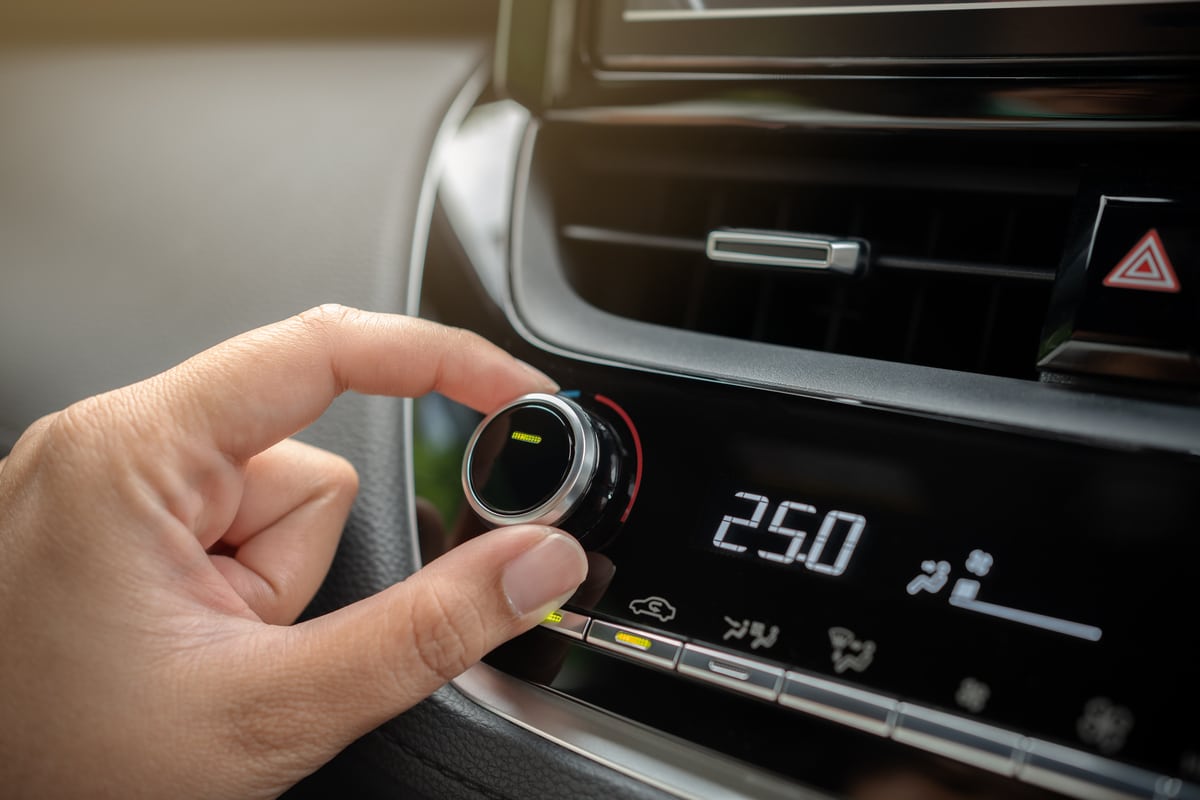Invented in the early 20th century, automotive air conditioning went from a luxury to a standard feature in most cars. It regulates internal temperatures, air quality, and overall passenger well-being by keeping the environment consistent and comfortable.
What is an Air Conditioning System in Automotive?
An air conditioning system in the is the mechanism that cools and dehumidifies the air inside the vehicle. It keeps the passenger comfortable by regulating temperature and air quality.
The system consists of components such as a compressor, condenser, evaporator and refrigerant. The compressor pumps the refrigerant through the system. The condenser cools the heat outside the vehicle. The evaporator absorbs the heat from inside the car and makes it cooler.
When you turn on the AC, the compressor compresses the refrigerant gas. The gas then goes through the condenser where it loses heat and becomes a liquid. The liquid refrigerant then goes through the evaporator where it absorbs the heat from the air inside the car and cools it down.
Modern car ACs also have filters to remove dust and allergens. Regular maintenance including checking refrigerant levels and component health is key to optimal performance.
References
- Automotive air conditioning. Wikipedia. Retrieved from https://en.wikipedia.org/wiki/Automotive_air_conditioning
- Automotive Air Conditioning. ScienceDirect. Retrieved from

History of Automotive Air Conditioning
The history of automotive air conditioning began in the early 20th century. In 1939, Packard introduced the first air-conditioned car. This was a major milestone in car comfort.
Early systems were big and inefficient. They took up space in the boot. Over time technology made them smaller and more efficient.
By the 50s air conditioning was available in many luxury cars. Cadillac, Chrysler, and Lincoln offered AC as a factory fitted option. Early systems had mechanical controls and basic refrigerants.
In the 60s air conditioning technology improved. Automakers introduced more reliable systems with better cooling capacity. Freon became the standard refrigerant and made it more efficient.
In the 70s more advancements. Environmental concerns led to the development of more eco friendly refrigerants. Automakers also made AC systems more energy efficient.
In the 80s and 90s air conditioning became a standard feature in most cars. Technological improvements included electronic controls and better airflow management. These made passenger comfort and system reliability better.
Today automotive air conditioning is advanced and efficient. They use modern refrigerants that are eco friendly. Continuous improvements aim to improve performance, energy efficiency, and passenger comfort.
What type of Automotive Air Conditioning Refrigerants are Used in Cars?
Here are various types of automotive air conditioning refrigerants used:
- R-12 (Dichlorodifluoromethane): Also known as Freon, R-12 was used in car air conditioning until the 90s. Phased out due to ozone layer depletion.
- R-134a (Tetrafluoroethane): R-134a replaced R-12 in the early 90s. Less harmful to the ozone layer and is still used in many cars today.
- R-1234yf (Tetrafluoropropene): R-1234yf is a more environmentally friendly refrigerant with a lower GWP than R-134a. Becoming the standard in newer cars due to stricter regulations.
- R-744 (Carbon Dioxide): Also known as CO₂, R-744 is a natural refrigerant with very low GWP. Used in some modern AC systems, especially in electric and hybrid cars.
- R-152a (Difluoroethane): R-152a is another alternative with lower GWP than R-134a. Less used but considered for future use due to environmental benefits.
Each refrigerant has its own properties and environmental impact. That’s why they are used in automotive air conditioning systems.
References
- Car Air Conditioning. Hella. Retrieved from
How does automotive air conditioning work?
Automotive air conditioning works through a cycle of processes involving the compressor, condenser, expansion valve and evaporator. Here’s a step by step explanation:
Compressor Activation
- When you switch on the AC the compressor compresses the refrigerant gas.
- This increases the pressure and temperature of the refrigerant.
Condensation Process
- The hot high pressure refrigerant goes to the condenser.
- The condenser cools the refrigerant by releasing heat outside the car.
- The refrigerant then becomes a high pressure liquid.
Expansion Valve
- The liquid refrigerant goes through an expansion valve.
- The valve reduces the pressure and temperature of the refrigerant.
- The refrigerant becomes a mixture of liquid and gas.
Evaporation Process
- The low pressure refrigerant enters the evaporator.
- The evaporator absorbs heat from the car’s interior air.
- The refrigerant evaporates and becomes a low pressure gas.
- This cools the air inside the car.
Air Circulation
- A blower fan blows the cooled air into the car’s cabin.
- This gives comfort to the passengers.
Refrigerant Recirculation
- The low pressure gas refrigerant goes back to the compressor.
- The cycle repeats to maintain the set temperature.
References
- Air Conditioning in Automotive. Universal Technical Institute. Retrieved from

What is the purpose of automotive air conditioning?
The main purpose of automotive air conditioning is to provide a comfortable cabin. It cools and dehumidifies the air inside the car so driving is comfortable even in hot weather.
The system controls the temperature inside the car. By maintaining the set temperature it ensures the passengers are comfortable throughout the journey.
Air conditioning also improves air quality. It filters out dust, pollen and other airborne particles so the inside of the car is healthier.
Also the AC system improves . Clear cool air prevents driver fatigue and keeps you alert. It also defogs and defrosts the windows so you have better visibility.
Overall the automotive air conditioning system gives comfort, health, and safety to all passengers.
What are the parts of a car AC system?
- Compressor: Compresses the refrigerant, and increases the pressure and temperature. It’s the heart of the AC system.
- Condenser: Cools the high-pressure refrigerant gas and turns it into a liquid by releasing heat outside the car.
- Expansion Valve: Reduces the pressure and temperature of the refrigerant so it becomes a mixture of liquid and gas.
- Evaporator: Absorbs heat from the car’s interior air and causes the refrigerant to evaporate and cool the air inside the cabin.
- Receiver-Drier or Accumulator: Removes moisture and contaminants from the refrigerant to protect the AC system.
- Blower Fan: Blows the cooled air into the car’s interior so air circulation is effective.
- Refrigerant: The refrigerant is the fluid that goes through the AC system for heat transfer and cooling.
References
- Classic Car Buyer’s Guide. Google Books. Retrieved from
- The Ultimate Guide to Muscle Cars. Google Books. Retrieved from https://books.google.co.in/books?id=b92LgC3IUTUC&pg=PA2&redir_esc=y#v=onepage&q&f=false


